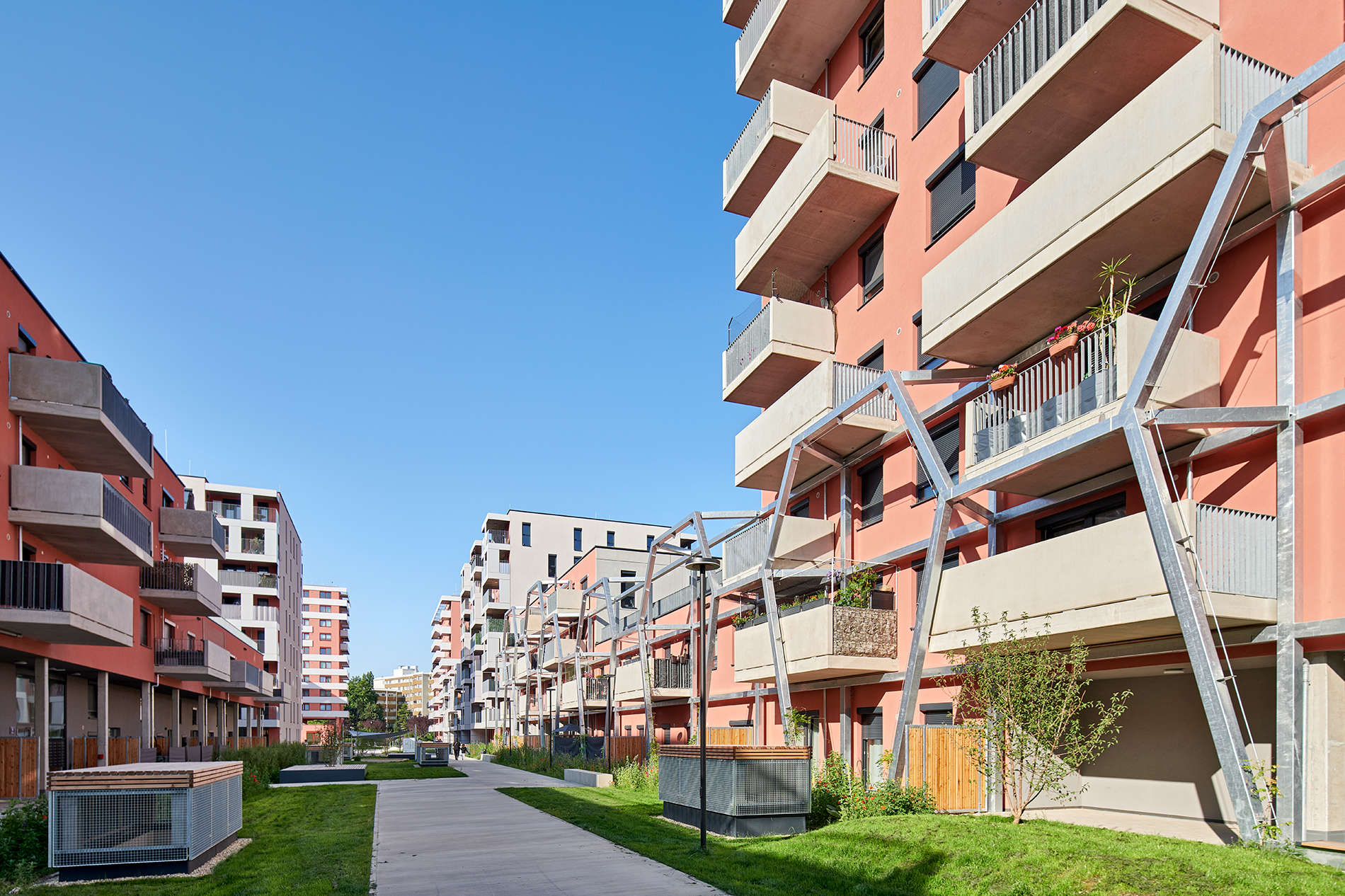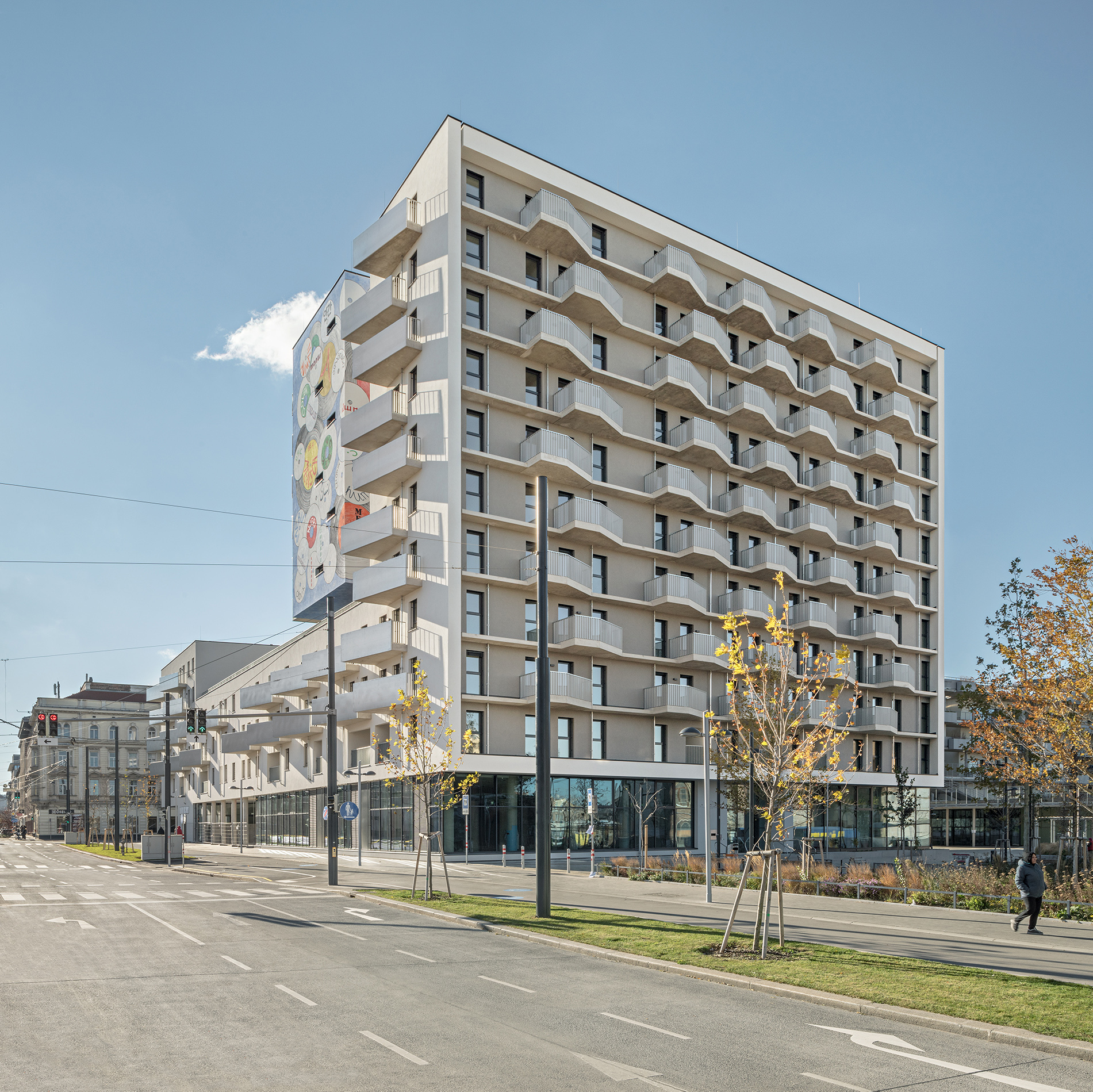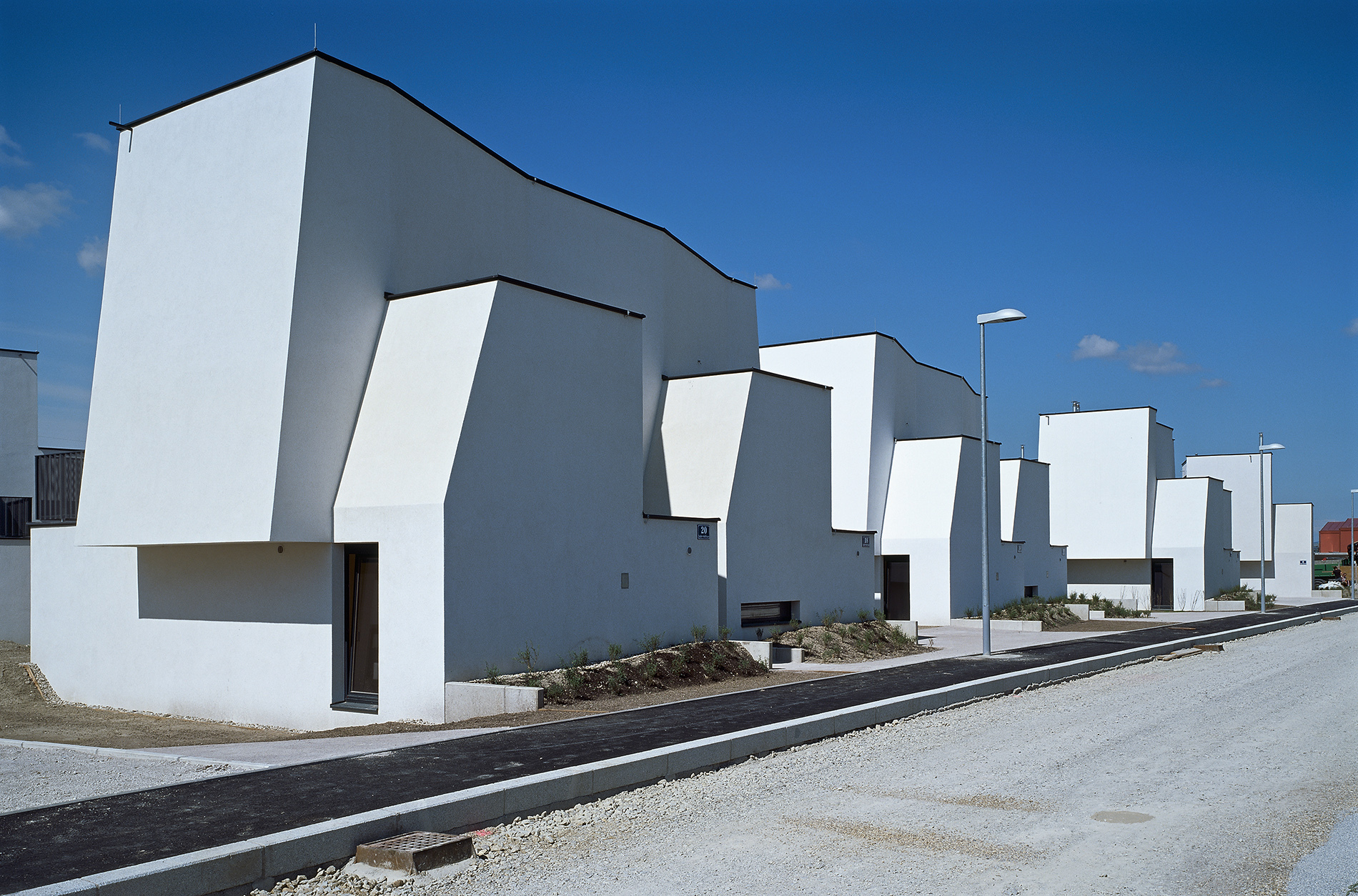Pichler & Traupmann Architects
Mühlgrundgasse
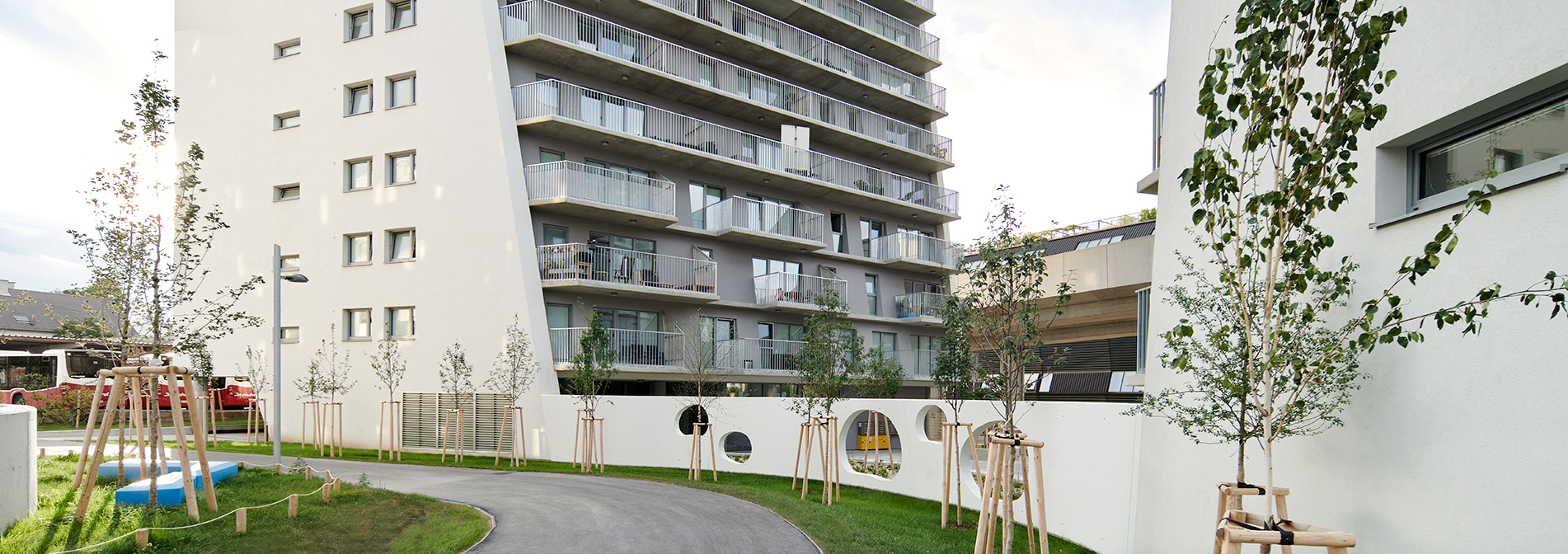
Respectful coexistence and the linking ofhouseholds of different kinds – in an admittedly “hard” urbanenvironment with different references.
Year
2016
Venue
Vienna
State
Completed
Category
Living
Size
16.167 m²
Year |
Venue |
State |
Category |
Size |
|---|---|---|---|---|
2016 |
Vienna |
Completed |
Living |
16.167 m² |
Year
2016
Venue
Vienna
State
Completed
Category
Living
Size
16.167 m²
Housing beside the metro
"Pioneering" on Mühlgrundgasse
The term “pioneering” as a thematicsuperstructure for an exposed building site.
The quality required by a growing city = challengeto a strongly defined infrastructure:
Housingdirectly beside the metro line.
Respectful coexistence and the linking ofhouseholds of different kinds – in an admittedly “hard” urbanenvironment with different references.
Quiet and privacy, as well as casual encountersand communication are to be offered here.
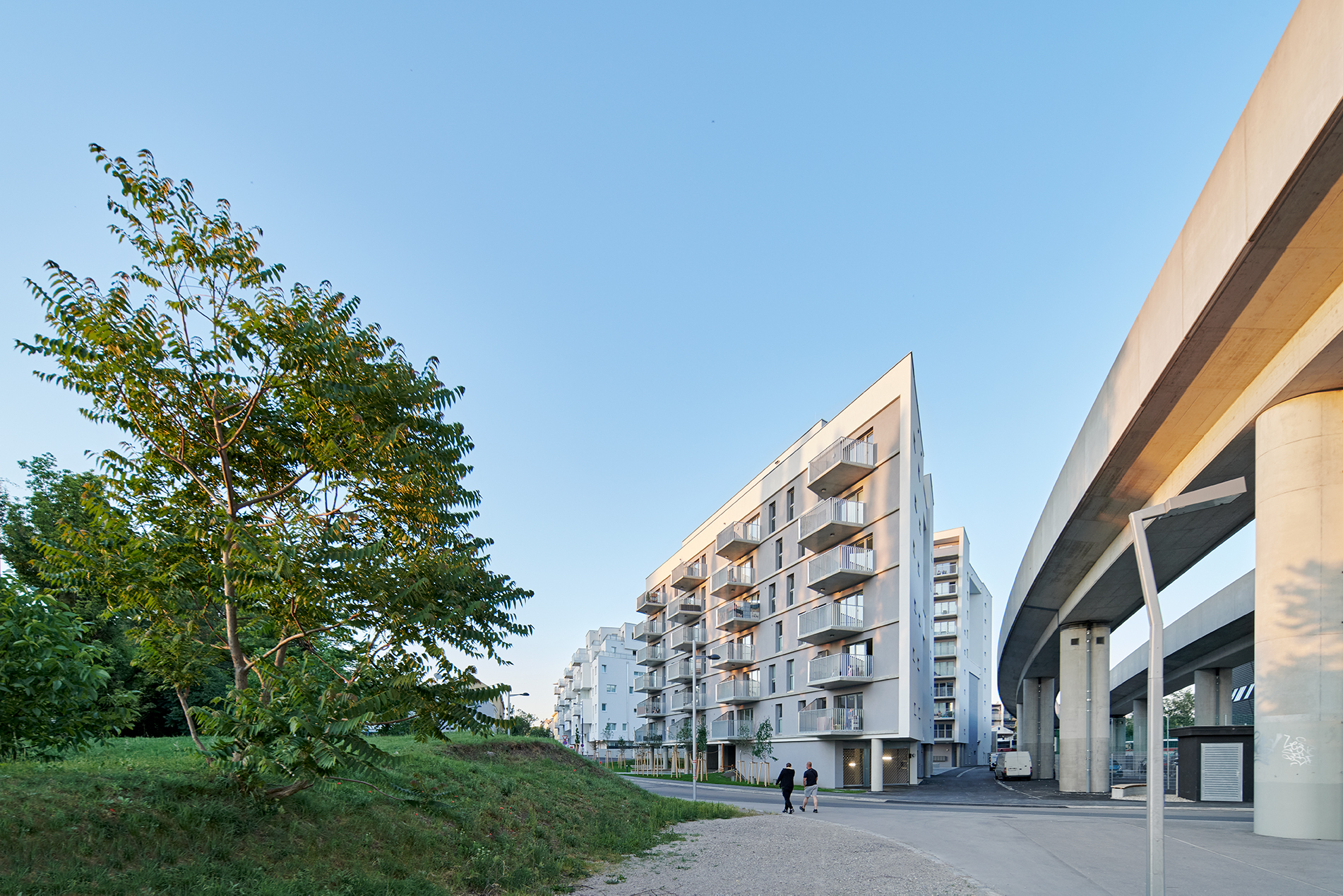
Housing beside the metro as prototypical urban housing, in a certain sense.
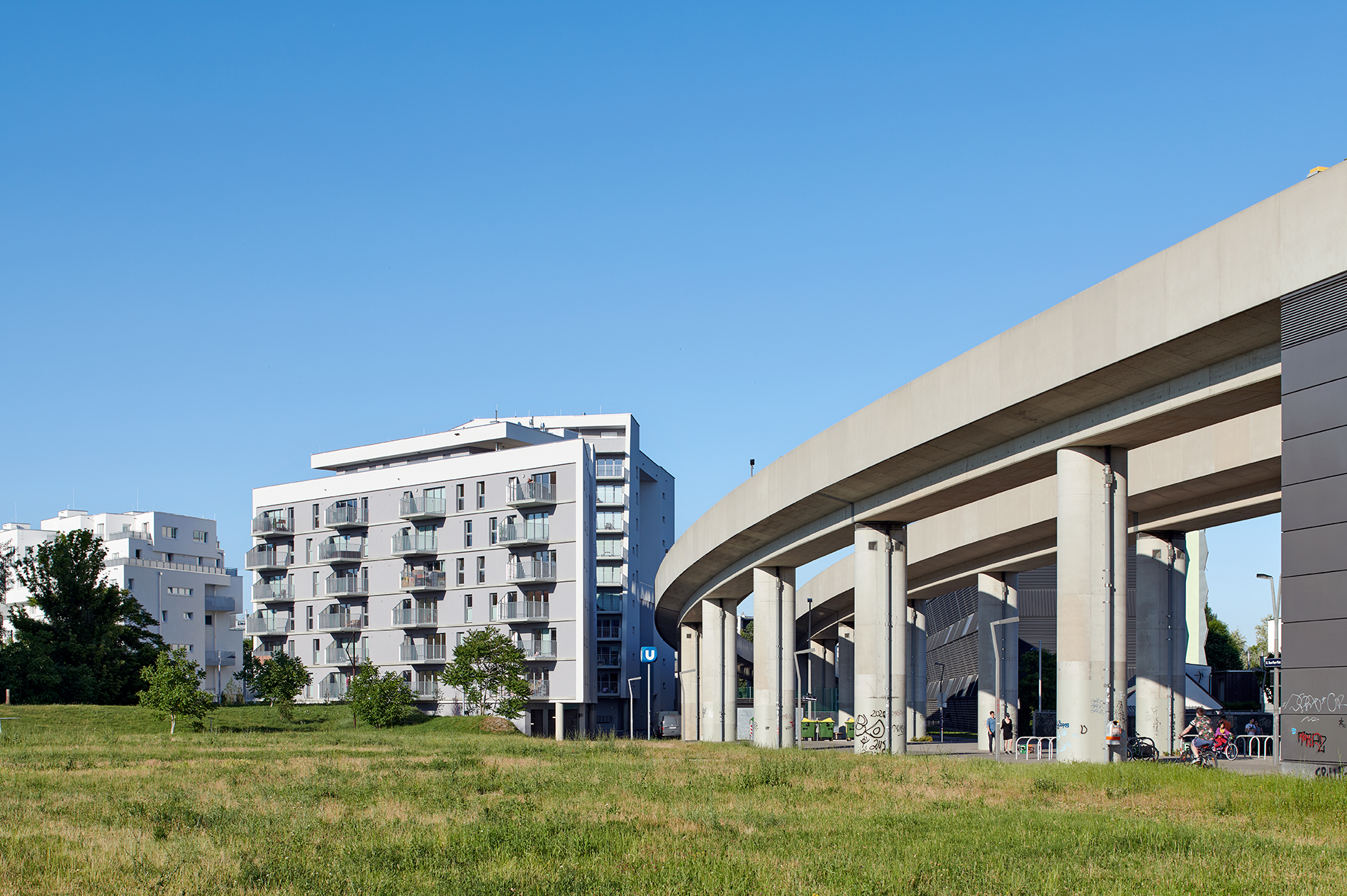
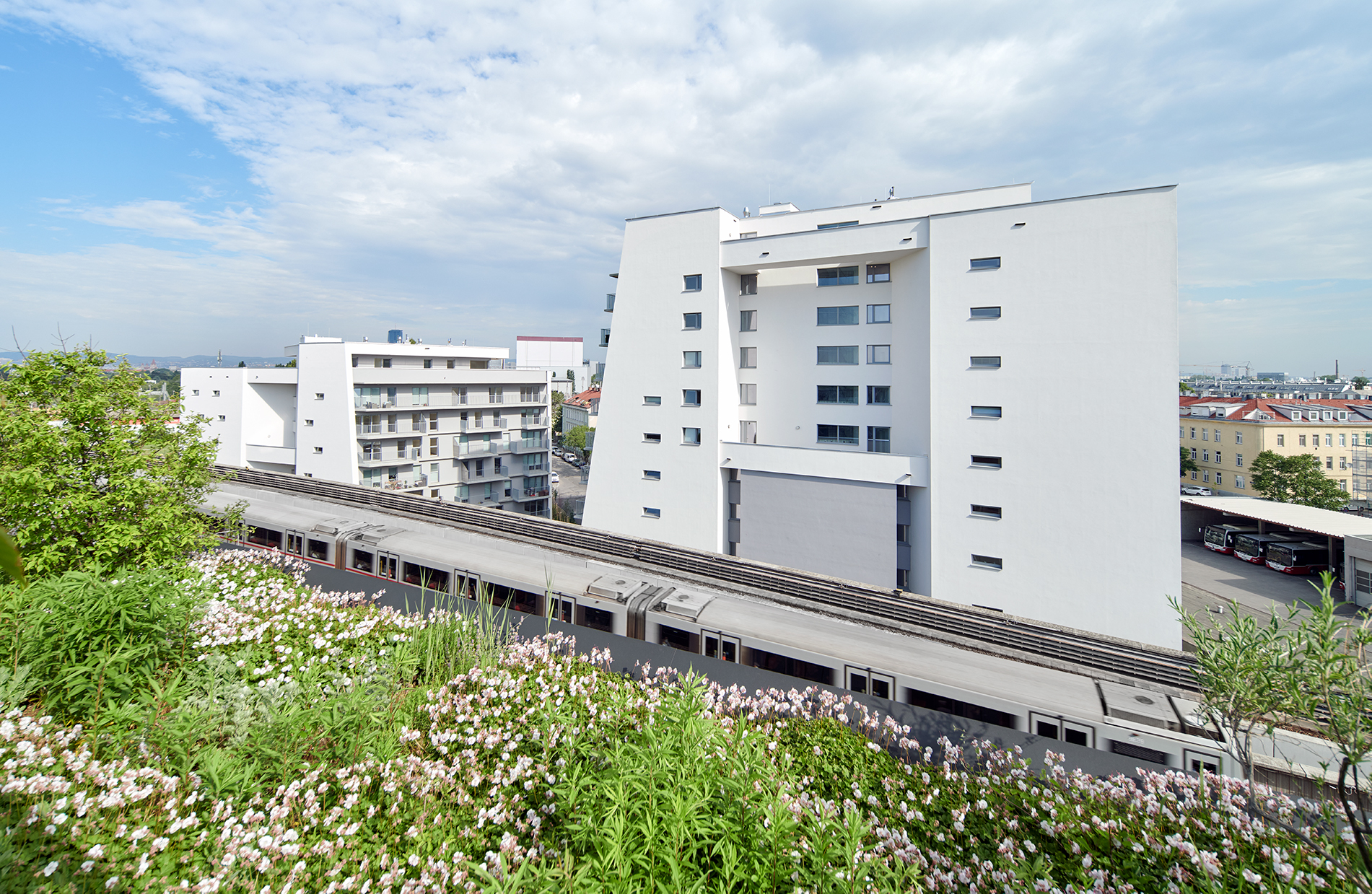
Architecture, urban planning
The building site: the cutting for the metro line
A site characterised by its striking location onthe U2 metro line
Decoupled position … and therefore fundamentally restricted in terms of direction
Building structure: two in dialogue
Individual buildings in their relationship andplacing to each other as a dialogue-based structure
Courtyard as the central point and the socialcentre
Circulation and open space: opening the ensemblein a directional way
The courtyard opens to the street space in acarefully controlled way, as does the part of the site thatunderneath the elevated metro line.
Circulation area from Mühlgrundgasse
The courtyard’s second connecting point faces towards the young people’s play area.
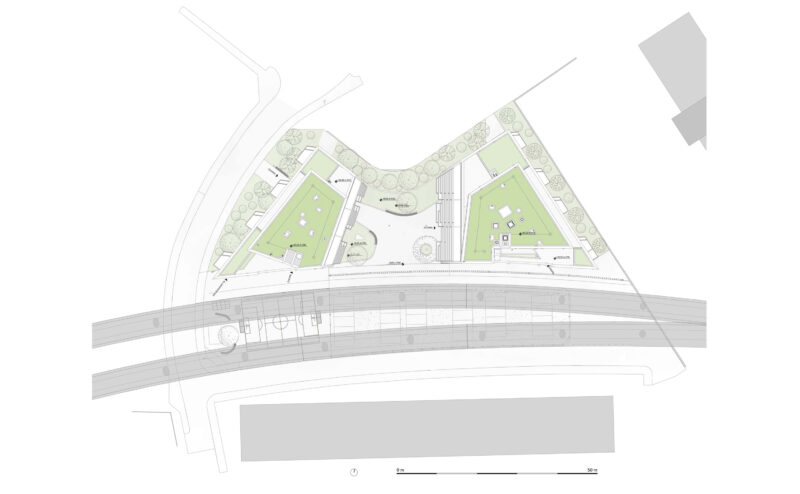
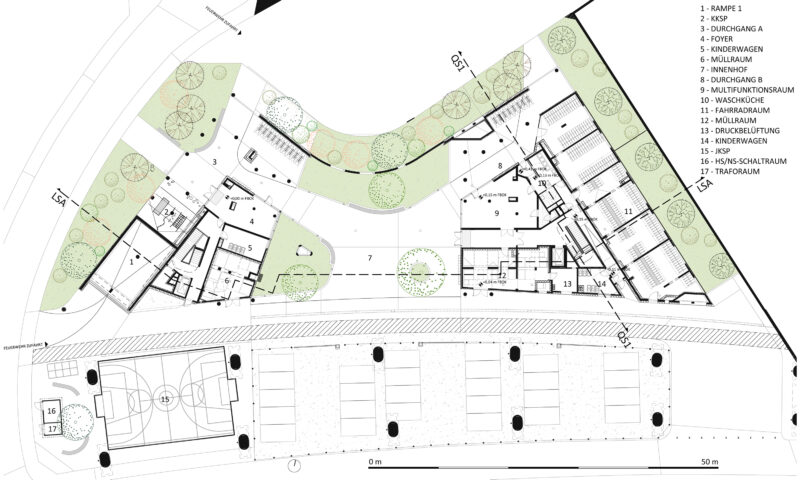
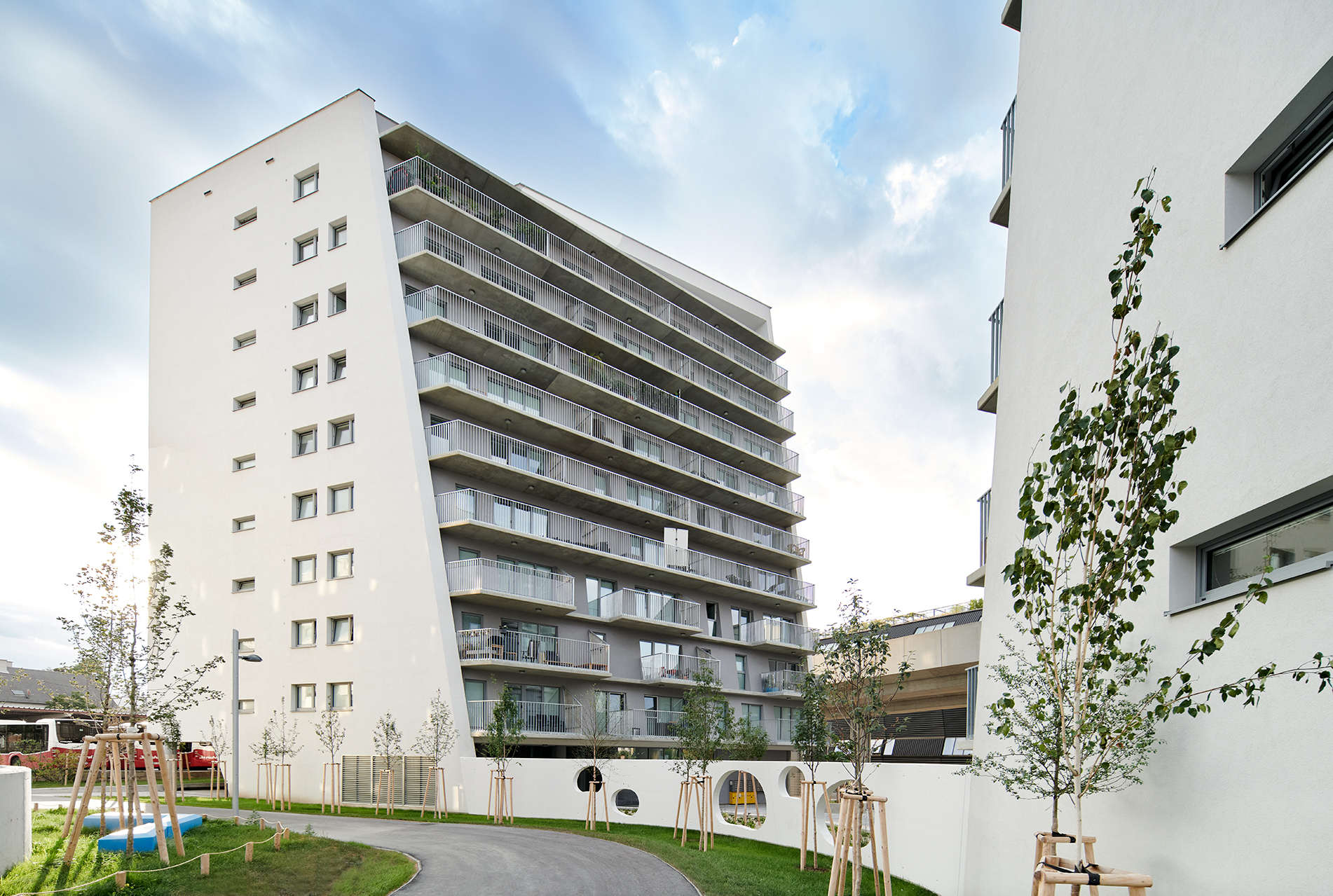
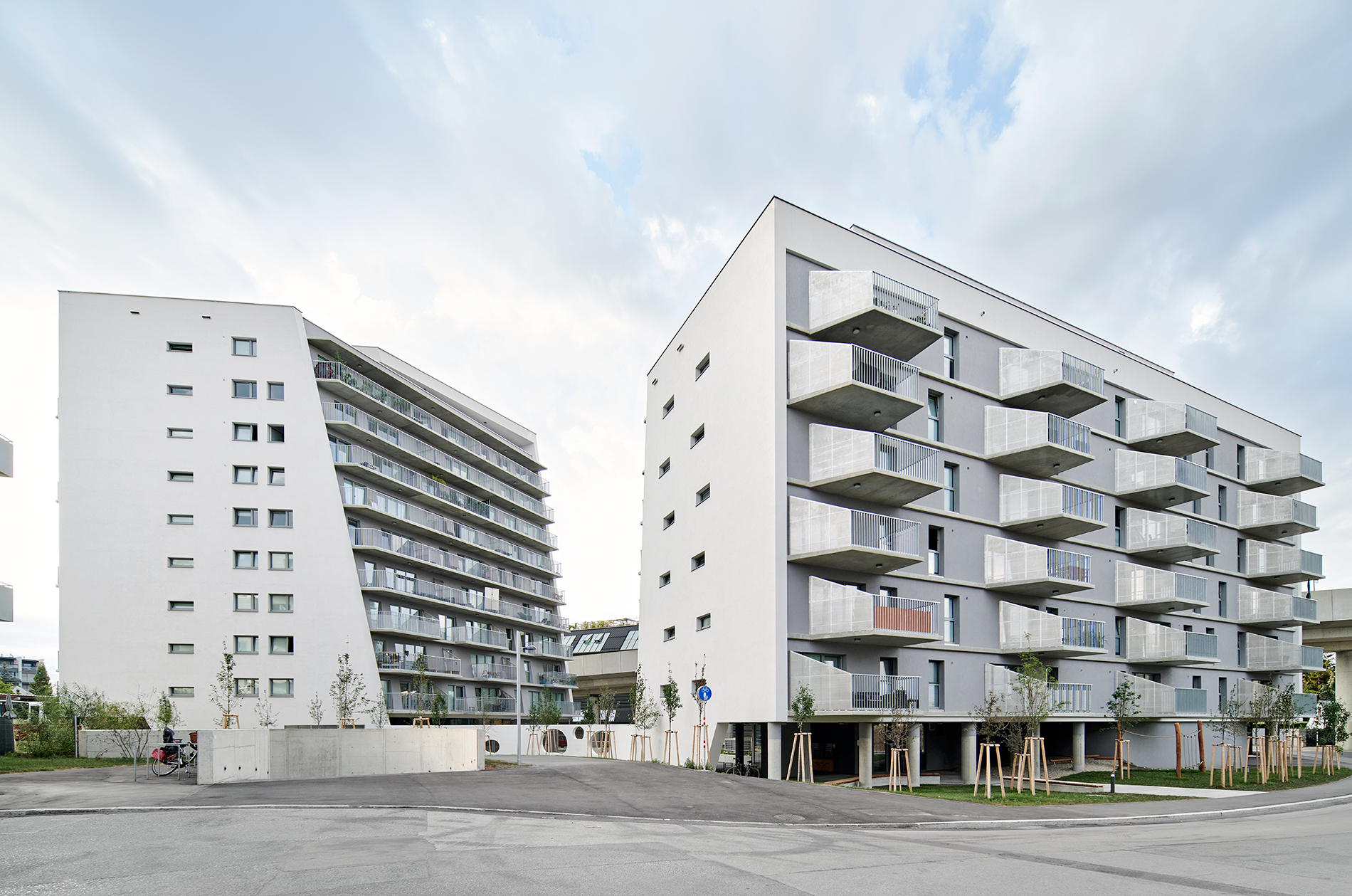
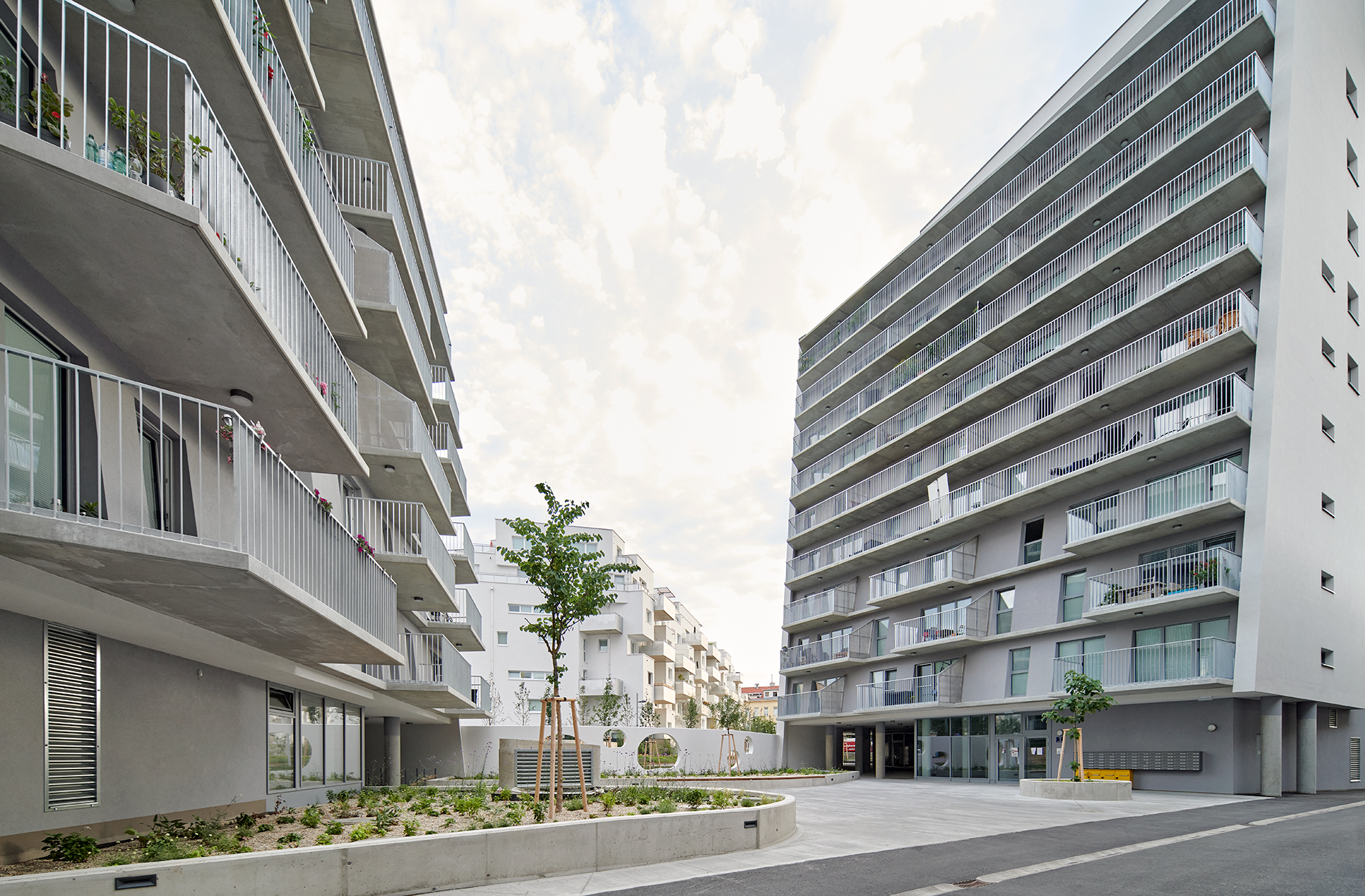
User and need-oriented
The housing typology is diverse, a strong conceptfor “smart apartments” was worked out. The inclined courtyardfacades create an incremental stepping of the apartment sizes andlayouts, so that, despite the compactness of the geometry, a certaingame with the areas and layout is encouraged. The possibilities areworked out at a larger scale.
Thanks to their variety the apartments offer awide range for different user groups. Even within the respectivetypes variations for different functions are indicated. In the areaof inter-generational living, for example, residential communitiesfor singles or elderly people are offered, which are characterised byindividual single rooms with living/sleeping and sanitary areas,connected to a communal part with entrance zone/kitchen/eating area.
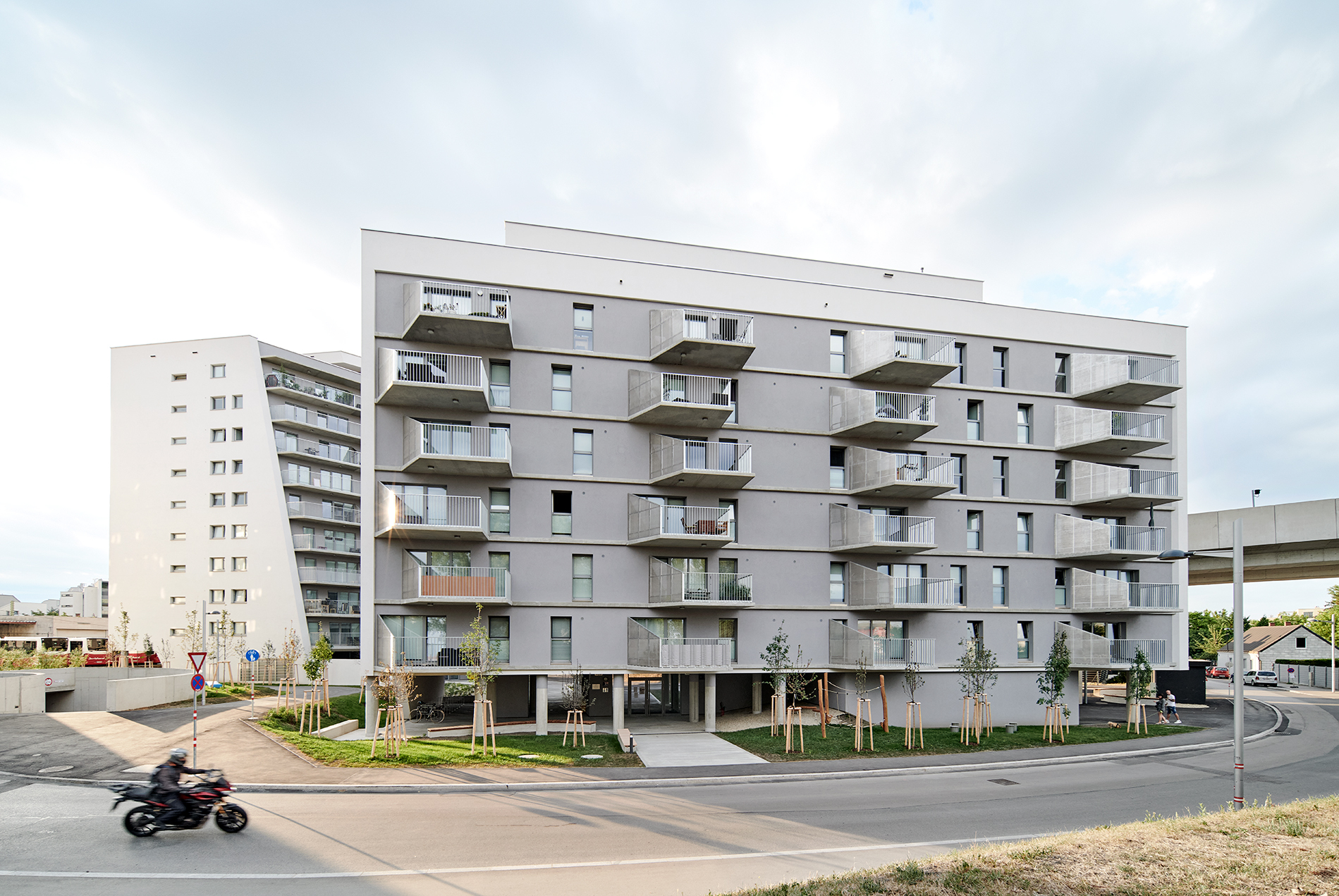
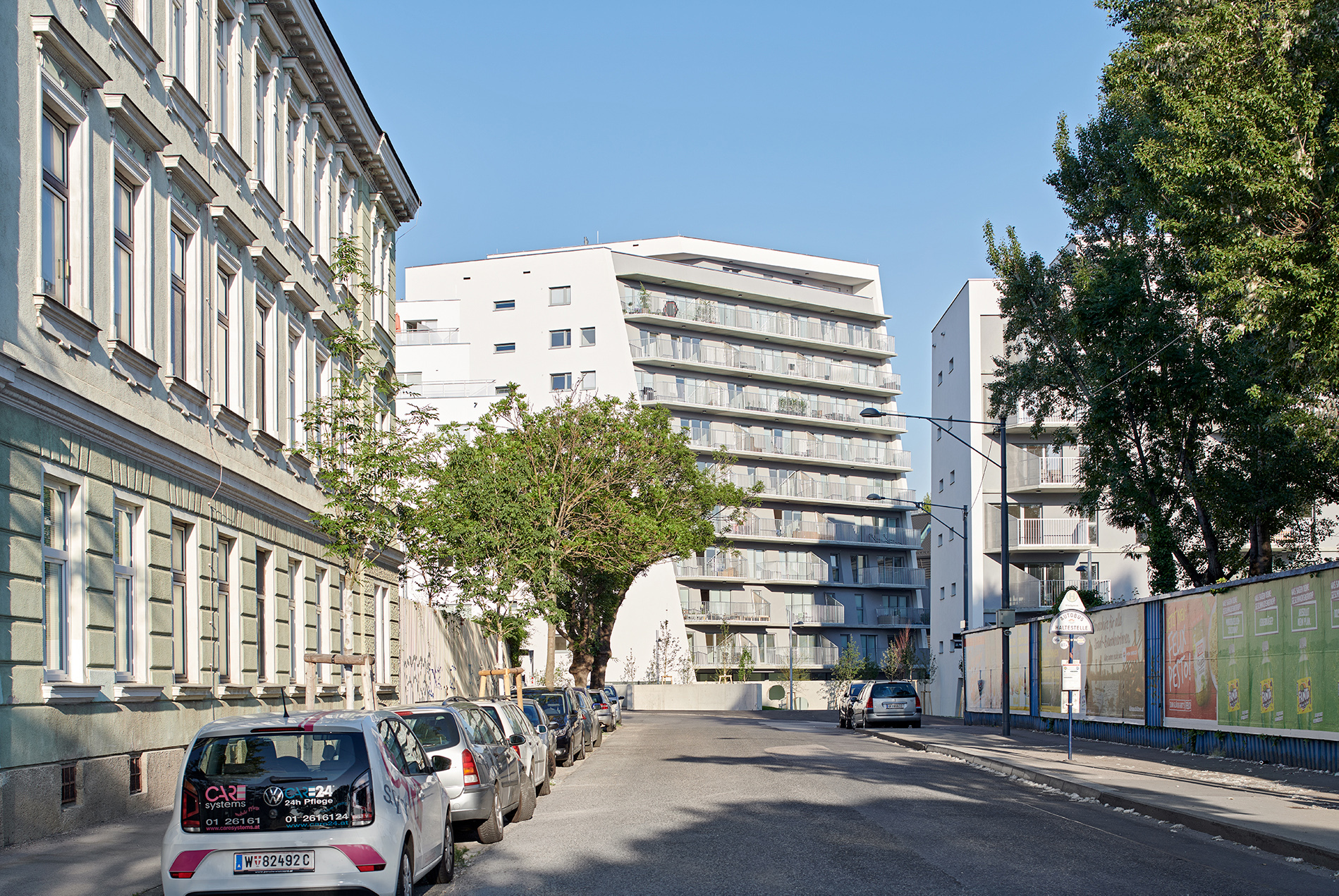
Architecture as a field of tension between directional openness and individual retreat
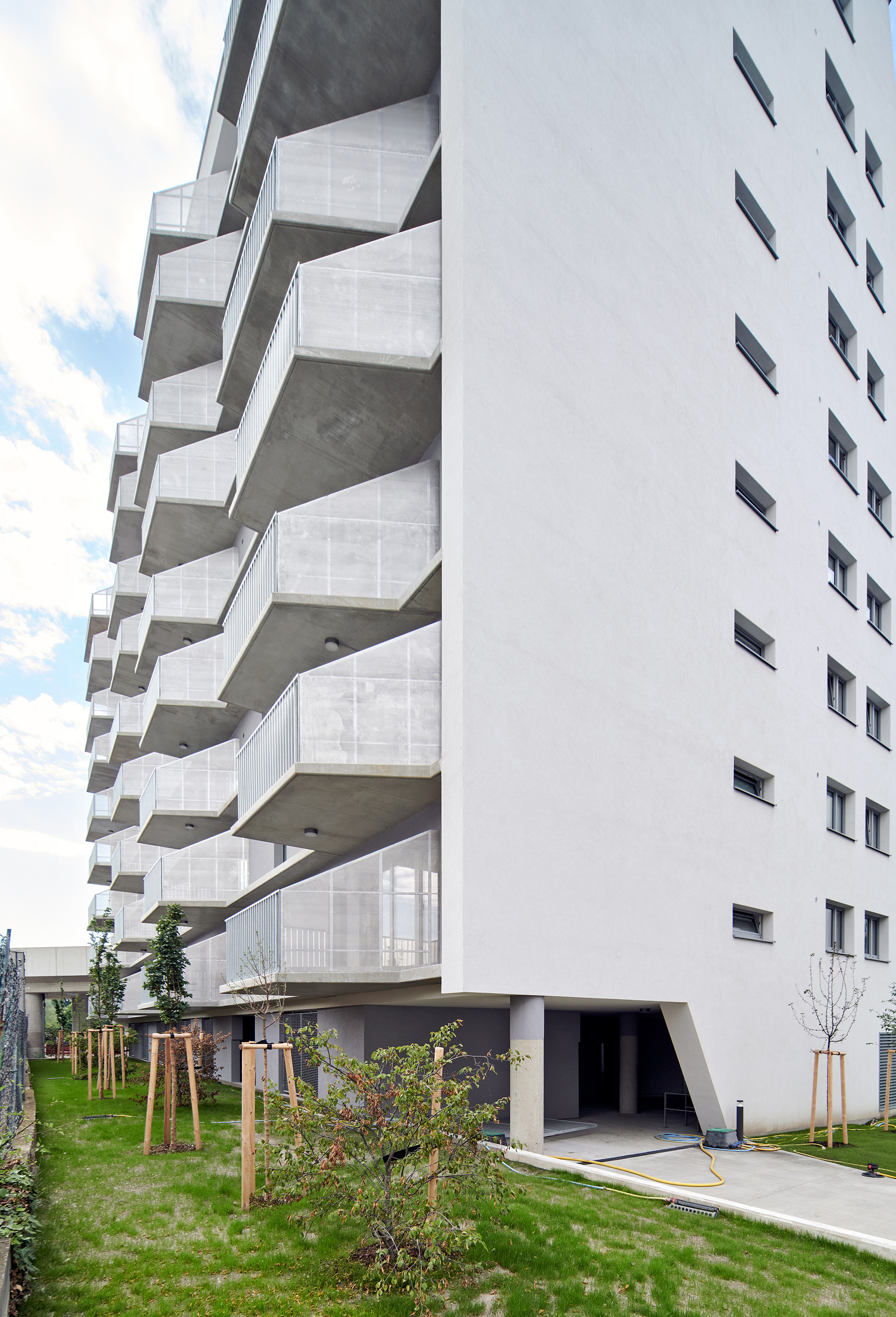
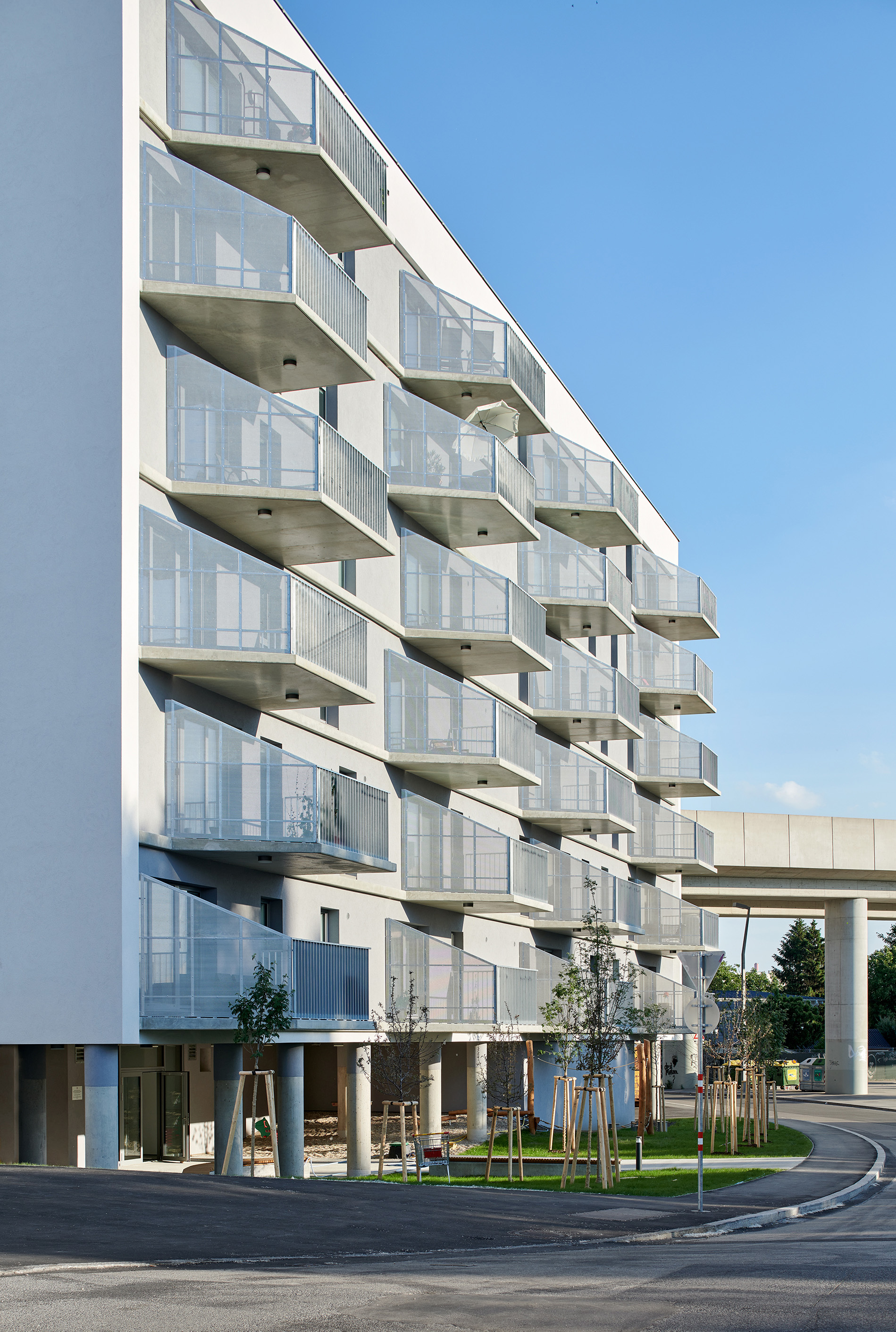
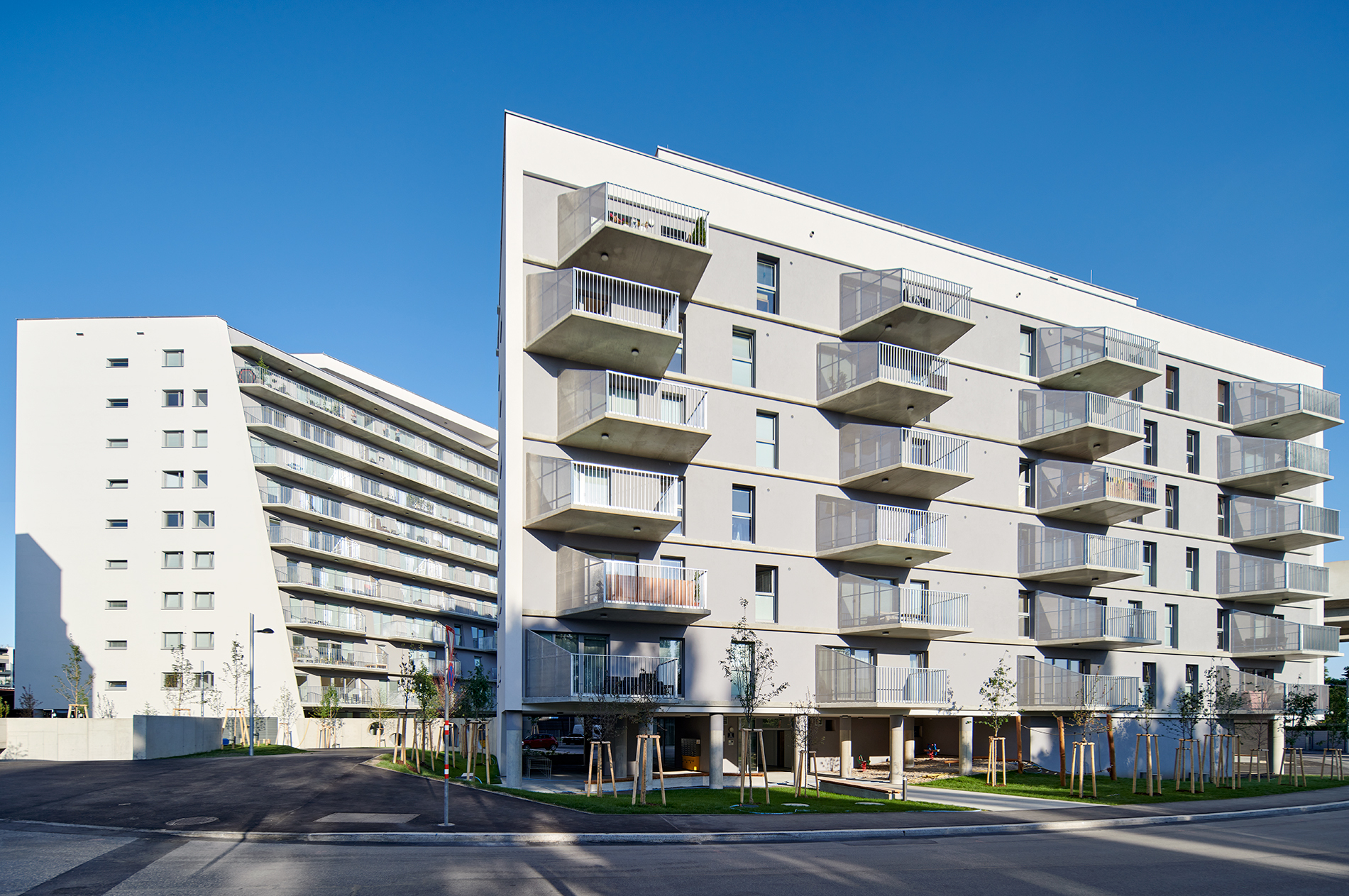
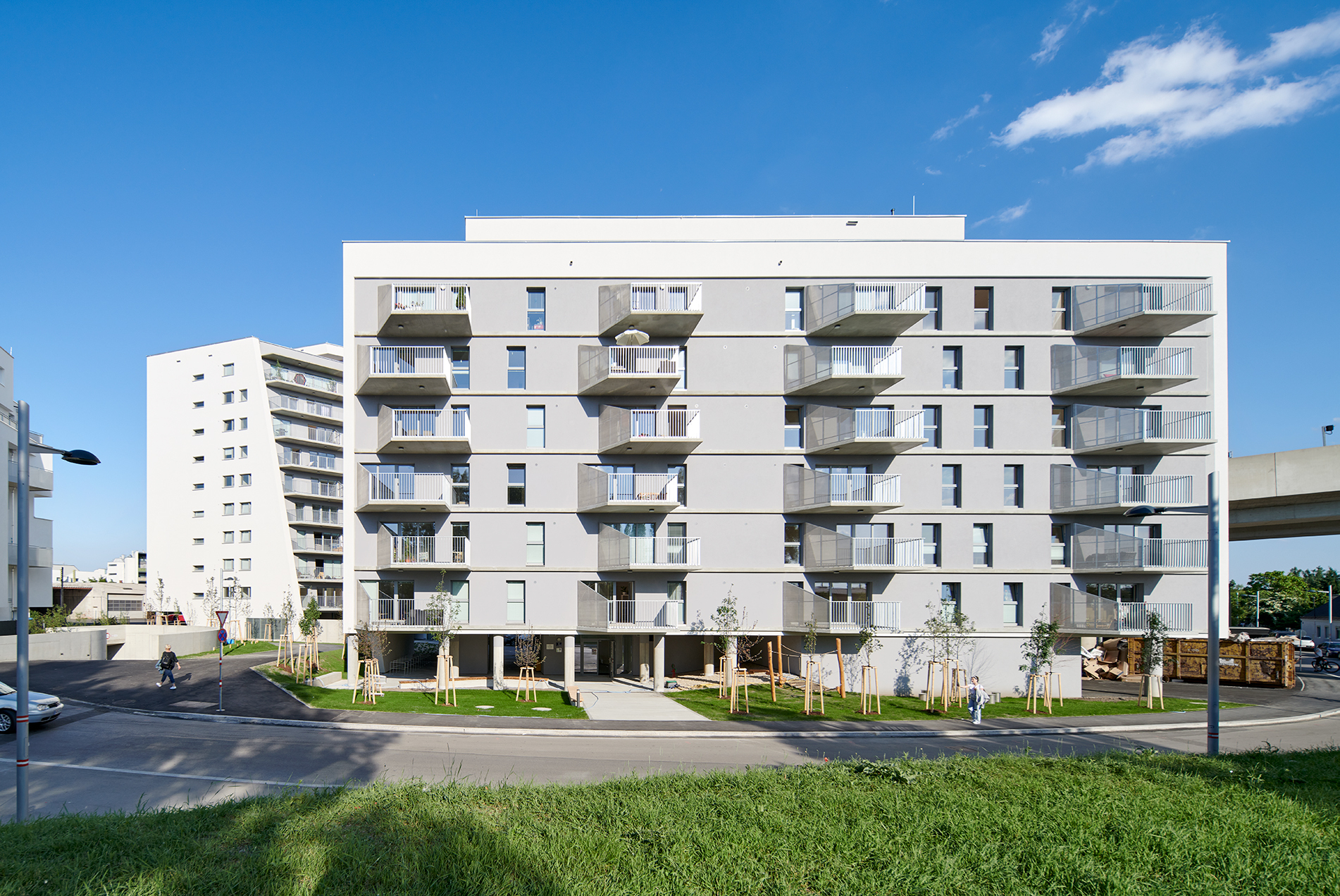
Living in community
At pronounced points in the circulation network: social cristallisation points as places of encounter. A significant aspect of this communal coexistence lies in the way the communal spaces, rather than just the individual apartments, exploit the building's southerly orientation.
This special feature, which is specific to the location, makes a virtue of necessity, as it were and generates an unexpected social factor out of the apparent deficiencies of the site.
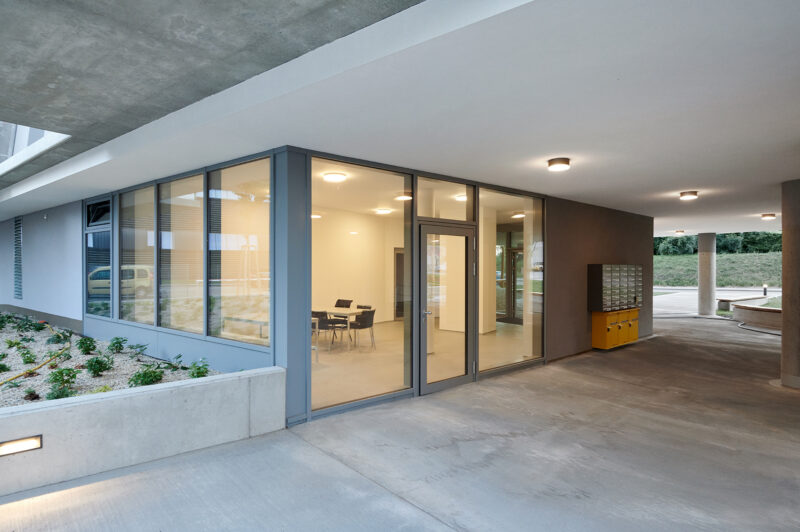
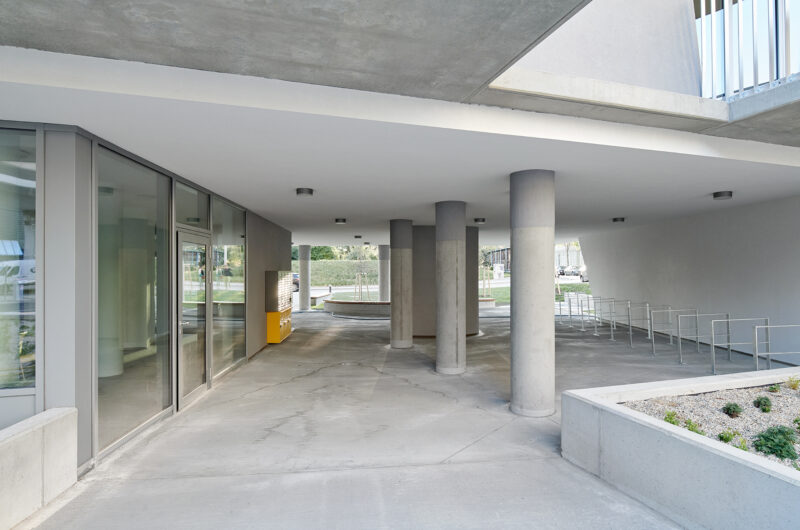
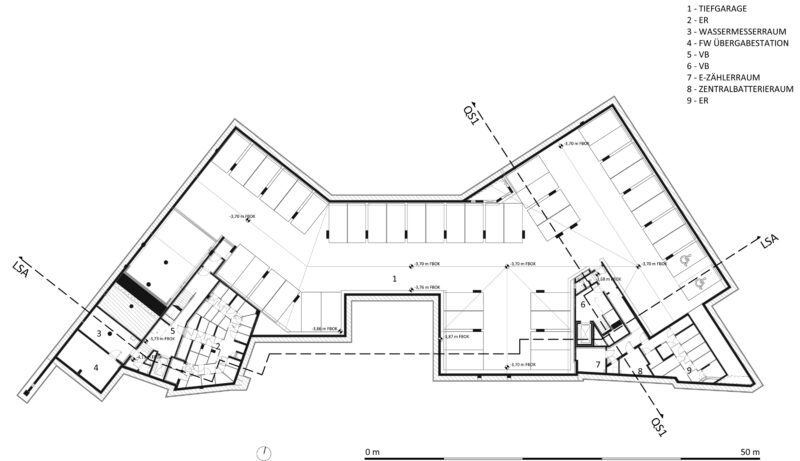
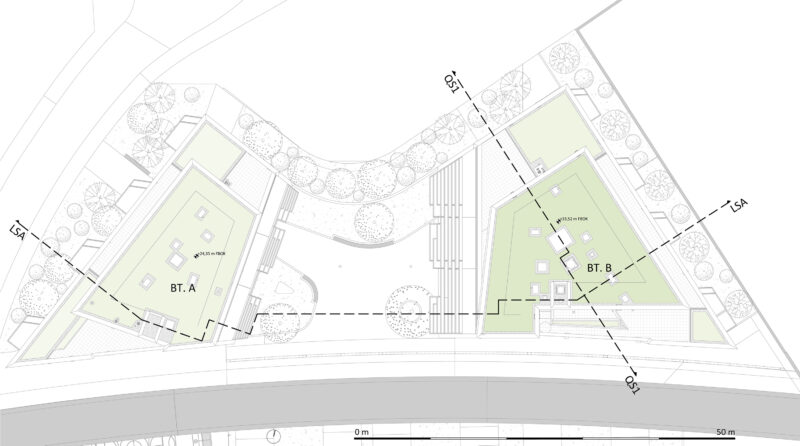
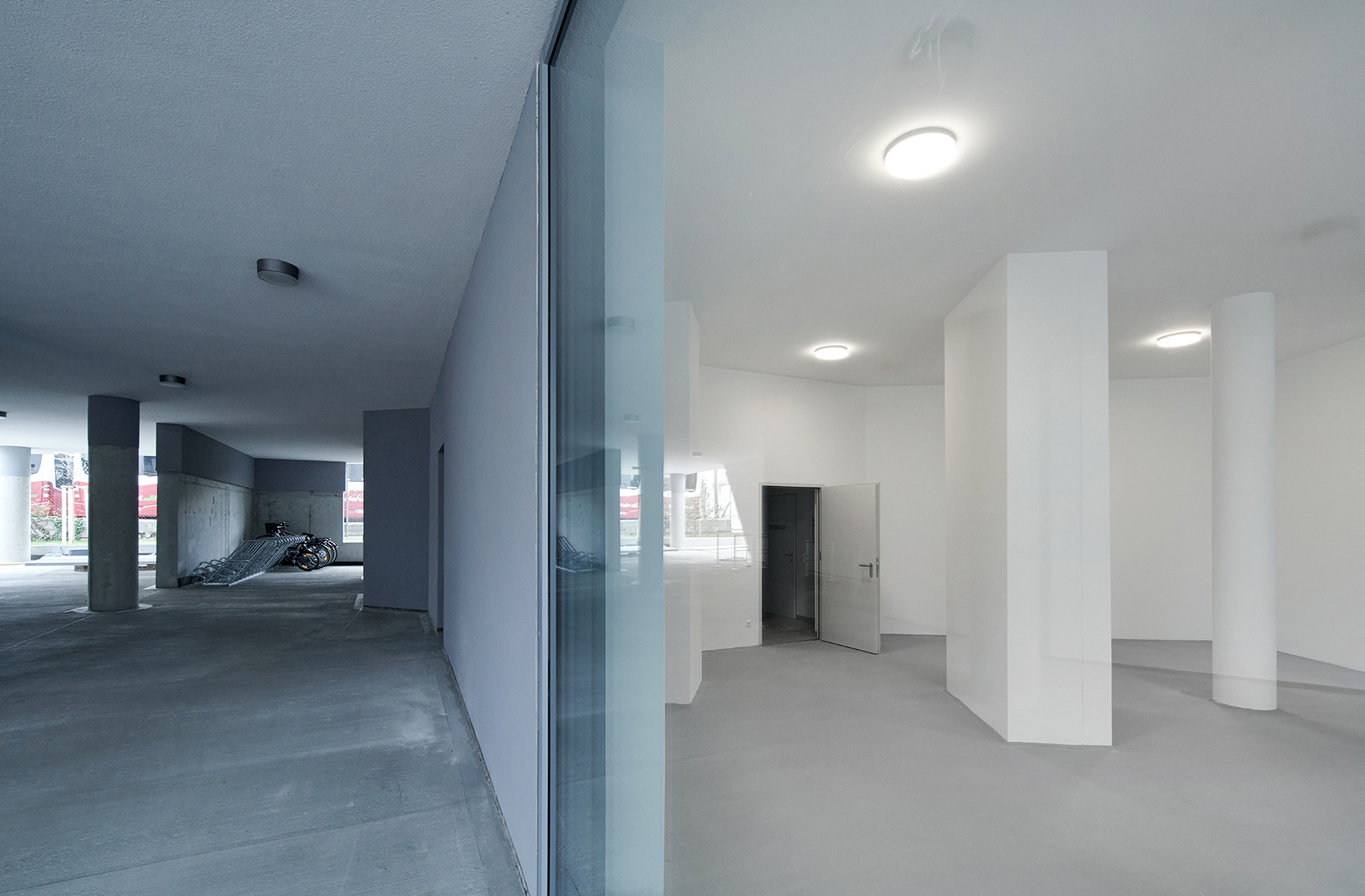
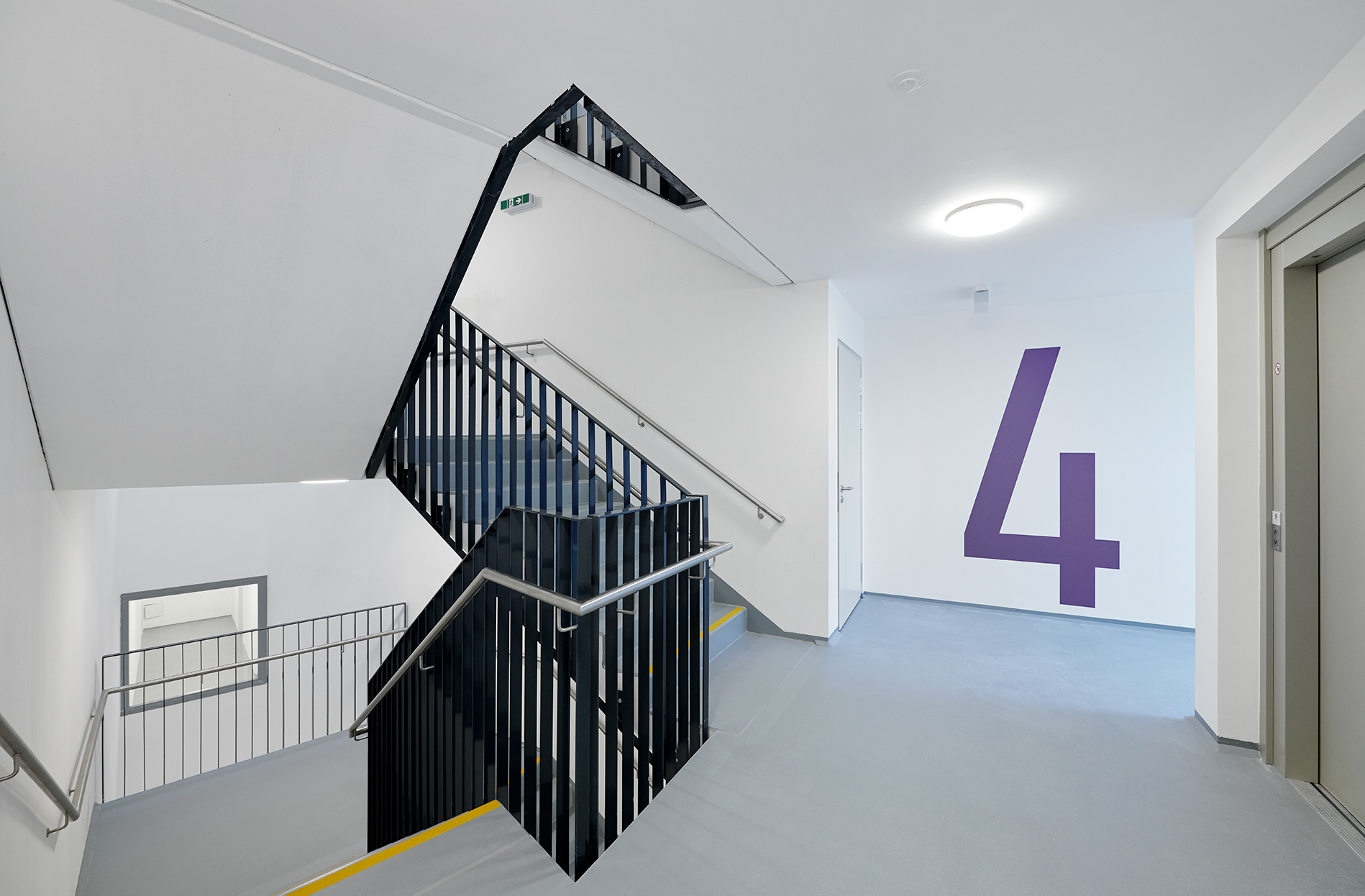
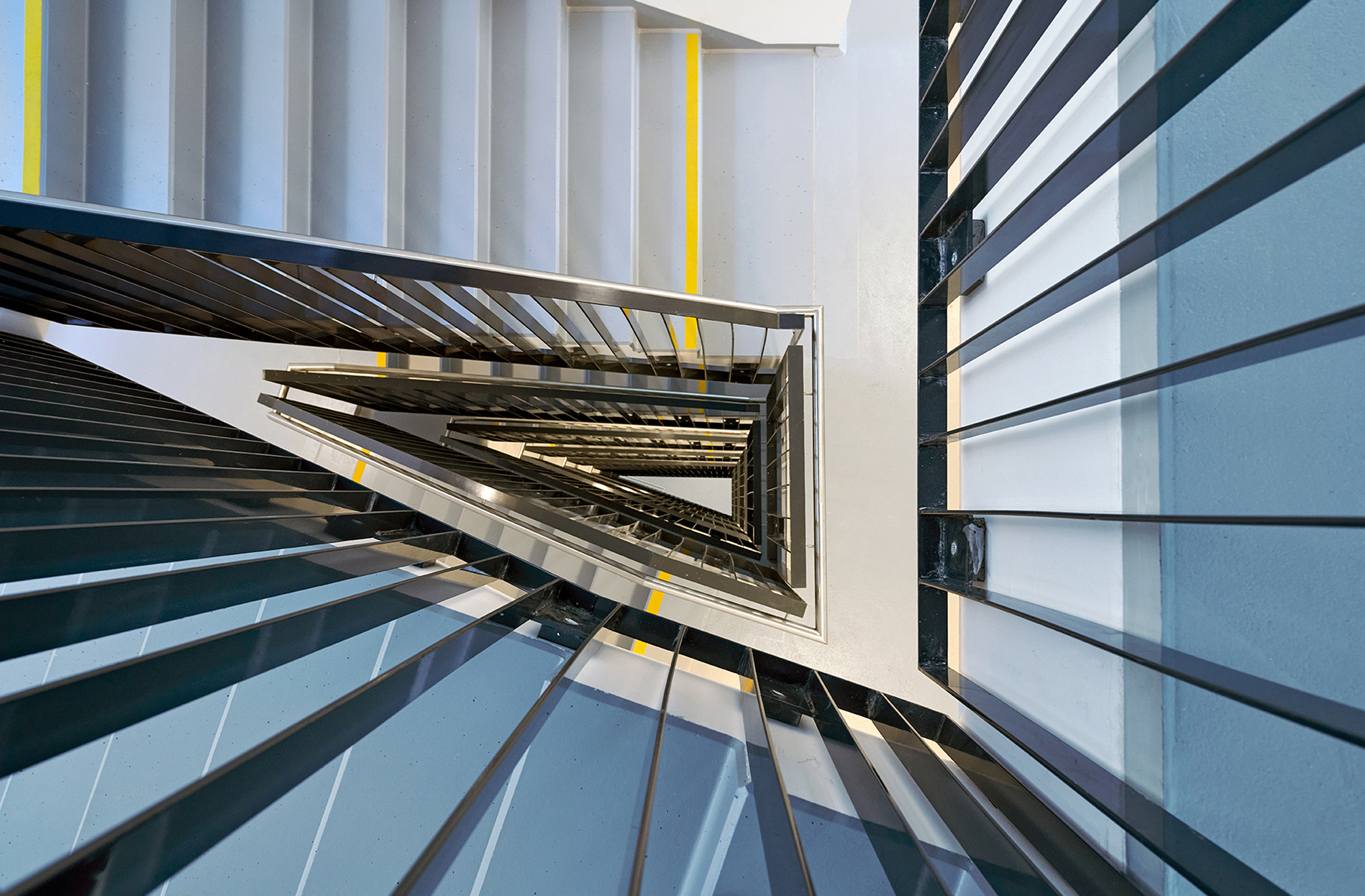
Architecture
Design team
Bartosz Lewandowski (team leader)
Klemens Gabriel
Peter Grandits
Joachim Kess
Alexander Tauber
Project team
Wolfgang Windt (project leader)
Hedye Darman
Patrik Drechsler
Peter Grandits
David Guisado T.
Barbara Jarmaczki
Joachim Kess
Tibor Koczian
Daniel Moral T.
Milan Suchánek
Julian Straub
Alexander Tauber
Client
AUFBAU Gemeinnützige Bau-, Wohnungs- und Siedlungsgenossenschaft reg.Gen.m.b.H., Vienna
Structural design, building physics
Dr. Ronald Mischek ZT GmbH, Vienna
MEP
MS Gebäudetechnik GmbH, Vienna | Stefan Aigner Gebäudetechnik, Hallein
Electrical planning
Elektro Göbl GmbH, Neustadt
Structural fire protection
Norbert Rabl ZT GmbH, Graz
Sociology
wohnbund:consult, Büro f. Stadt.Raum.Entwicklung, Vienna
Landscape design
DI Dr. Karin Standler, Technisches Büro für Landschaftsplanung, Vienna
Hard facts
Start of planning: 2016
Start of construction: 2019
Completion: 2021
Usable floor area: 6.999 m²
Gross floor area: 16.167 m²
Building volume: 34.731 m³
Location: 22nd district of Vienna, AT
Use: Residential
Scope: Architectural planning
Photos
Toni Rappersberger, Vienna
